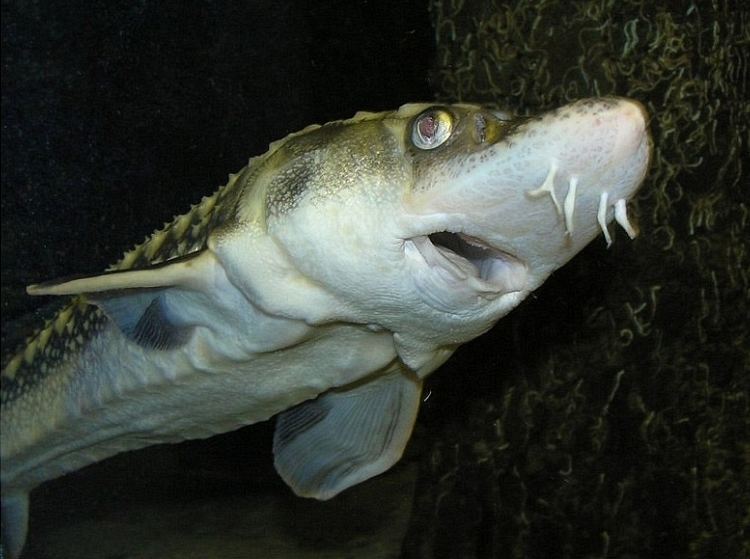Higher classification Acipenser | Phylum Chordata Family Acipenseridae Scientific name Acipenser sturio Rank Species | |
 | ||
Similar Sturgeon, Acipenser, Russian sturgeon, Beluga, Siberian sturgeon | ||
European sea sturgeon early swim test sequence
The European sea sturgeon (Acipenser sturio), also known as the Atlantic sturgeon or common sturgeon, is a species of sturgeon previously found on most coasts of Europe. It is anadromous and breeds in rivers. It is currently a critically endangered species. Although the name Baltic sturgeon sometimes has been used, it has now been established that sturgeon of the Baltic region are A. oxyrinchus, a species otherwise restricted to the Atlantic coast of North America.
Contents
- European sea sturgeon early swim test sequence
- Storioni russi acipenser gueldenstaedtii allevamento in acquaponica
- References

The wedge-shaped head of the European sea sturgeon ends in a long point. There are many sensitive barbels on the facial area. The dorsal fins are located very far back on the body. Five longitudinal lines of large osseous plates are found on the body of the fish. The stomach is yellow and the back is a brownish grey.

This sturgeon can reach 6 m (20 ft) and 400 kg (880 lb) in weight, but a more common length is 1.25 m (4 ft 1 in). They can reach an age of 100 years, and have a late sexual maturity (12 to 14 years for the males and 16 to 18 years for the females).

They are found on the coasts of Europe, except in the northernmost regions and the Baltic region, and have rarely even been known to cross the Atlantic Ocean to the coasts of North America. Like many other sturgeons, they spawn in the rivers inland from the coast. Despite their estimated range of distribution, they have become so rare that they only breed in the Garonne river basin in France. Conservation projects involving this species include reintroductions based on specimens from aquaculture with the first releases in 1995. For example, some 50 sturgeons were reintroduced in the Rhine near Nijmegen in 2012.
Like other sturgeons, they eat mollusks and crustaceans which they find with their barbels.
At the beginning of the 19th century, these fish were used extensively to produce caviar, but have been a protected species in Europe since 1982.
